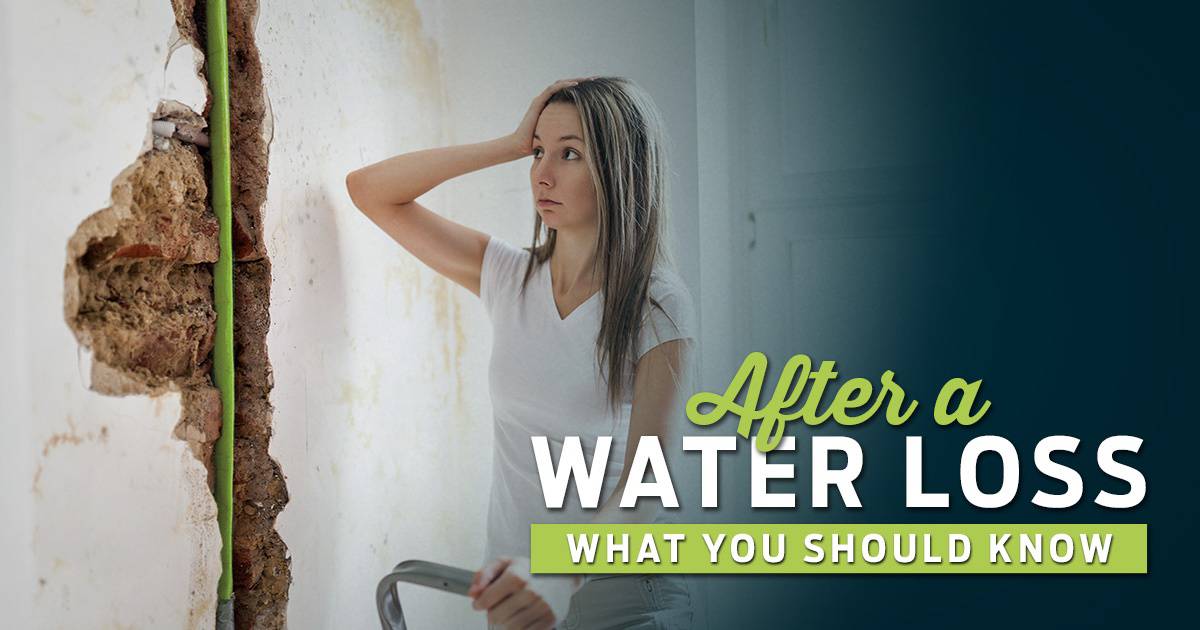
After the Water: What You Should Know After a Water Loss
October 17, 2022
Share:
Water losses are costing the Canadian economy billions. Climate-based analysis are projecting billions of dollars’ worth in losses over the next few years, targeting commercial and residential properties alike.
When water enters our home, things can fall apart very quickly. No one wants to deal with a water loss, especially when it can interrupt our normal routine and put us out of the swing of things for weeks – or even months. When disaster does strike, it is important to keep a level head.
After a water loss, we might be feeling a lot of mixed emotions. Stress, despair, anxiety. There might be a lot of stress about the physical and the economic repairs. When do you get back to normal? Who do you contact first? Where will you stay while your home is being repaired? A restored home is possible – and many instances of water loss are covered by your property insurance. Here is a guide on what to do following a water loss.
First – Avoid Doing These Things
Before you determine what next steps you should take following a water loss event, there are a few things you should not be doing for your own safety. Those include:
- Do not re-enter your home unless you have been given explicit permission to do so from the authorities involved in your case.
- If the power was on during the time of the water loss, be sure to get permission from an electrician before returning to your home.
- Do not turn the power back on unless you have been given the OK to do so once returning to your home. A provincial or municipal inspection may be required before power can be reconnected.
- Do not use any appliances or systems – heating, sewage, or pressure – until every component has been inspected, cleaned, and dried by an electrician.
Your home should be structurally safe without any holes, broken glass, or other debris that could cause harm before you may return. You should always receive permission from any qualified authorities before doing so.
What Steps to Take Post-Water Loss
Here are your next steps to take post-water loss:
- Return to your home only if you have been given permission from the respective authorities
- Ensure that each one of your family members who were inside the property at the time of loss are safe and secure. Check for any injury and seek medical assistance if need be.
- Inform your loved ones, family, friends, employers, etc. about the accident.
- Call your home insurance company/broker to initiate the claims’ process. If your vehicle was damaged, call your auto insurance broker when time permits.
Water losses may be covered by your home insurance, as long as they were due to the sudden or accidental escape of water in your home. This may include instances of storms causing a hole in your home, which cause water to enter. Your policy may have special exclusions or separate coverages, depending on your needs, so be sure to discuss it with your Claims Representative, who will be assigned to your case once the claims’ process has begun. Overland water coverage, which is an added to a standard policy, can cover many instances of flooding.
The Claims’ Process
The first and foremost step before you file a claim would be to secure your property. Before entering your home, gain the permission of the authorities first. Then, make a list of all the damaged items in your home and the damages to the structure of your home. Take photos if possible. It would also be a good idea to retrieve any documentation you have of your belongings and/or home pre-damage, like photos, receipts, certificates, etc. Now you can open your claim.
The claims’ process goes as follows:
- File your claim virtually or call your company directly. This call may last around 30 minutes, so be sure that you have the time to spare to go through the details. The agent may do the following:
- Request your full statement
- Go over your policy
- Direct you to an emergency response service if there are any repairs that need to be tended to immediately
- Ask you to fill out and send in certain documents or tell you which of the documents you receive will need your signature
- Confirm your deductible amount and give you a claim number
- You will be assigned to a Claims Representative. This is a person with experience handling claims and is your personal resource during this period. They can explain the process of seeking temporary living arrangements if your home is uninhabitable and go over your Additional Living Expenses with you based on what is outlined in your policy.
- An adjustor and/or contractor will be sent to look over your property and determine the full damages. They will then estimate the total cost of damages and send this to your Claims Representative.
- Repairs may begin. At this point, you should send in the list of damaged/destroyed property and structural damage with an estimate of its total value. Proof of ownership is not mandatory, but it can be helpful to supply some form of documentation for your belongings to speed up the claims’ process. This can be anything from photos to warranties or even credit card statements.
- Your Claims Representative will get in touch with you and begin authorizing repairs or rebuilding. If any items or property are written off, they will arrange for a settlement.
- You will receive a settlement as soon as all your documents have been signed and sent in. Your Claims Representative will tell you who you will pay your deductible to. For repairs’ payment, they will go over with you how payment is done and determine whether you will pay the contractor directly and be reimbursed or if they will do that for you.
- Once repairs are complete, make sure everything meets your expectations before you sign any documents that certify repairs have been complete.
- Once payments and repairs have been completed, your claim will be closed.
Protecting your home and property against flooding is always crucial, but sometimes things happen. Remember that your Claims Representative is always your best resource and may be able to help you with any concerns or questions that you have. Discuss with them if you have any concerns about repairs, payment, or settlement. Inform them if you have a preferred contractor or wish to do repairs yourself.
While Excalibur Insurance Group hopes you never have to deal with a water loss, we are here for you if you do. We hope this guide can give you some peace of mind as well as guidance on what to do if your family should ever go through a water loss. When the worst strikes, we’re there for you. Check out our blog on what to do after a residential fire.






